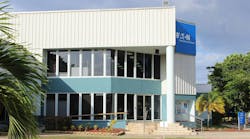A few years ago, in the depths of economic recession, many electrical distributors, reps and manufacturers greeted the promise of the solar power market like a lighted inn on a stormy night. Along with electric vehicles, energy-efficient lighting and wind power, solar was an electrical products market poised for significant growth and investment, just when they needed it. But the shelter hasn't offered much rest.
The solar power market is booming, posting 67% growth in the fourth quarter with 700MW to 750MW (rooftop and ground-mount) installed in the United States, according to the Solar Energy Industries Association (SEIA). Installations this year may grow by 3,000MW to 4,000MW, up from about 1,800MW in 2011, especially if a U.S. Treasury Department cash-grant incentive known as the 1603 program is renewed, said Rhone Resch, SEIA's chief executive officer.
There's a lot of work being done, but it's sort of a chaotic marathon sprint. The name of the game in the solar market is the race to “grid parity” — the point where power generated from solar becomes competitive with power generated by established sources such as coal, nuclear and natural gas, without the need for subsidies. It's not there yet, except in some large-scale installations, but the ongoing drop in the prices of photovoltaic (PV) modules, along with the constant advance of technology, suggests the day may not be far off.
The price of solar modules fell by more than half last year. These falling prices gained momentum last month from a number of global forces, especially a decision by China, the largest producer, to continue increasing production capacity and a decision by Germany, the world's largest buyer of photovoltaics, to cut subsidies for solar installations by over 20 percent. Germany's move came after subsidies and feed-in tariffs that gave solar power producers above-market rates for power drove installations that more than doubled the German government's goals, installing a record 7,500MW in 2011.
In part due to these price declines, the solar market has been claiming high-profile casualties among photovoltaic manufacturers in a rapid wave of consolidation. In February, Michigan-based solar module manufacturer Energy Conversion Devices filed for bankruptcy protection and announced the intention to sell off its solar business. Through its subsidiaries Uni-Solar and Solar Integrated Technologies, the company manufactures flexible silicon solar cells and develops solar projects.
Last December, industry pioneer BP Solar shut down after 40 years, saying the falling prices of PV panels had made the business unsustainable.
Then there's the high-profile case of Solyndra, a panel manufacturer in California that went out of business not long after receiving a $535 million loan guarantee from the U.S. federal government. This quickly became a political issue and threw all kinds of government support for renewable energy into question.
Many of those solar manufacturers who are still in business are struggling. Thin-film manufacturer First Solar, a darling of the run-up in clean-tech investment, which saw its stock price fly into the stratosphere in 2008, is an example. Last month, with its stock price already foundering around a tenth of its peak, First Solar reported a net loss of $413 million for the fourth quarter of 2011 compared with net income of $155.9 million in same period in 2010 and announced that it would delay production at a planned manufacturing facility in Mesa, Ariz., until the market rebounds. (See sidebar, “The Sad Story of Solar Stocks,” p. 20)
The same week, Colorado-based thin-film solar panel maker Abound Solar, a competitor of First Solar, announced it had stopped production and would delay startup on a new factory in Indiana.
These are just the most recent and remarkable troubles. Several PV manufacturers have joined together to ask the government for protection from what they see as “dumping” practices by producers in China. Other parts of the industry that are benefiting from low panel prices are pushing back on these efforts.
Benefits to the BOS
Falling prices of PV panels are not necessarily a bad thing for electrical manufacturers producing the “balance of system” (BOS) products that mount and connect solar panels. Prices for other pieces of core solar technology — inverters and combiner boxes (circuit-breaker-equipped distribution boxes that join together several strings of DC circuits into a single circuit) for example — have also been falling, to the point that those are no longer the primary cost concern for solar developers.
“Project pricing has changed,” says Sam Veague, solar specialist for Cooper Industries' B-Line subsidiary, which produces racking and cable management equipment and other BOS parts for solar installations. “Three years ago, the time spent on installation was something solar developers didn't really notice because so much of the cost went to the panels. Now modules are as cheap as they can get, inverters and other major components as well, so the question is how else to control cost. That's when they started looking at racking and other balance of system products. Now we can show them how they can save time-on-job and solve other issues like grounding, things they just fixed when something went wrong before.”
This change in pricing has helped a lot of electrical manufacturers make themselves indispensible to solar developers, boosting the role of the electrical supply chain and its sales organizations in the solar market.
“The price drop was faster and more aggressive than anyone anticipated - combiner boxes that used to be $900 to $1,000 each a few years ago, today they're $350 to $400. We're lucky in the sense that we were engineering products with that cost structure in mind,” says Kelly Boyd, president of the independent manufacturers' rep agency ElectroRep, Sausalito, Calif.
When Electrical Wholesaling did a story on the solar market in 2008, Boyd noted that much of the purchasing for solar projects was bypassing the traditional electrical channel and being bought by developers direct from the manufacturers. The solar market grew up as a fringe technology, nurtured by enthusiasts and specialty dealers outside the traditional electrical channel.
Since 2008, Boyd tells us now, the market seems to have shifted toward the channel in some cases, though direct deals are still prevalent. Larger distributors who got in early and developed a specialty have been able to establish relationships with the large solar developers and help them solve their supply problems. Smaller local distributors joining the game now will find themselves at a disadvantage as the barriers to entry have risen.
“In California, people like WESCO, some locations of CED, have separated from the pack,” Boyd says. “A lot of distribution jumped in because they had electrical contractors interested in a new revenue stream. But there are lots of moving parts and pieces to this market, you have to understand the regulations and the incentives, and the regulations in San Diego are dynamically different than the ones in L.A. or Fresno. You can't provide one-size-fits-all training, you have to have a specialty in it. Some distributors made those investments, hired people from the solar industry or trained their own. People who did that, it cost them a lot of money on the front end, but they're reaping the benefits now.”
Developers working all over the country (or the world) building solar power facilities need allies with equally broad coverage who can assure them supplies of the products they need to build the systems along with deep knowledge of the local markets and all the relevant regulations. Distributors with a national accounts presence are doing especially well with it, Boyd says.
The same is true of manufacturers and manufacturers' reps trying to get a piece of the solar business. Size matters, and there's been a wave of mid-sized players dropping out of the market. “It's gone from anyone can jump in to where you've got to pay a big price to stay in. And it's the same for reps,” Boyd says. “Because of the proliferation of competitors, the hit rate is pretty small. You have to bid a lot of work to get your piece of the pie. If you bid 10, you might get one,” which has persuaded some distributors and reps to look elsewhere for more promising percentages.
The development of regulations for solar system components is driving some of the shakeout on the manufacturing side. The need for UL listings on many of the products, for example, is forcing some of the smaller shops out of the business. Billion-dollar manufacturers have established relationships with testing laboratories and government regulators and they often have their own UL-certified testing facilities in-house. For a startup making products in a garage, the cost of going through the certification process may be more than they can afford.
Distributors who seek to thrive in the solar market have to get comfortable with its erratic, hurry-up-and-wait timelines. Fortunately, the variability of those timelines can help to prove distribution's value.
“The biggest difference in solar versus, say, the industrial market is the timelines being so compressed,” says Chip Tairney, whose multiple roles with wire giant Southwire include being an industrial field sales engineer for the Rocky Mountain region and director of its renewable energy business. “Cost can be secondary to lead-time. The developer's power-purchase agreement has a turn-on date, and you're going to be generating power by this date. Then it gets delayed two weeks waiting for permitting. Then it gets delayed another week waiting for the interconnect agreements. Then the contractor gets the notice to proceed, and it's off to the races.”
Compounding the timing problem is the fact that the products used by large solar installations are difficult to standardize, especially in the case of wire. Not only are the wire types often unconventional, requiring custom production, but projects using the same type of wire will need different jacket colors to conform with local regulations. Distributors working the solar space will see a lot of aluminum conductor as well. Not only because of the cost difference, but because the systems are typically being designed by younger engineers who have no inherited aversion to aluminum.
“Most of these guys have never heard of the Beverly Hills Supper Club fire,” says Tairney, referring to the 1977 blaze in an overpacked Southgate, Ky., dinner club that killed 165 people and was attributed by some to faulty aluminum wiring.
Supplying wire for rooftop solar projects may be in the sweet spot for most distributors. The wire sizes are fairly standard and the distributor is stocking small enough spools that a contractor can put it on his shoulder and climb a ladder.
For a good-sized solar farm, however, you may be talking several million feet of wire. And the wire sizes vary because the wire runs all vary. The wiring schemes are often more theoretical than practical, and especially in the early days it wasn't unusual to see specifications for wire types that either didn't exist or weren't used in the U.S. market, says Tairney of Southwire. Early projects would specify wire types used in the Canadian market, or that didn't exist at all and had to be specially made. Even now, though, the systems' designers are very resistant to the idea of oversizing conductors because of the added cost. For a manufacturer, or even a good-size distributor, keeping that much specialty wire sitting in the warehouse waiting for a notice to proceed can be a costly gamble.
“The advantage a distributor brings, if they're a national distributor and can stage things within a day of the jobsite, get it cut and shipped out, there's value there,” says Tairney of Southwire. “Where distribution does add value, is in situations where we agree to manufacture cable by a given timeline, but by that point the project is pushed out a month or two. We're not geared toward sticking product in a corner and leaving it and then shipping it out when the customer calls for it. The distributor can serve as that buffer, they can hold that cable. If I have cable sitting in my facility, anybody's capable of buying that cable.”
One reason the timing gets so messed up is the way the financing and permitting processes work. A utility, charged by their state government to meet a renewable portfolio standard, puts out a request for quote for a power purchase agreement (PPA) in which a solar developer will build the system, connect it to the grid and maintain it. The developer puts together their design, estimating the returns they'll see over the 20 to 25 year life of the system with expected maintenance costs and all the rest, and offer their quote. The utility will pick the best design and say, “You're the guys we're going with.”
Until that point, there's no tract of land. The developer has to find the land, has to find investors to invest real money in this project, and get the thing built. This compresses the timeline, but things don't necessarily move quickly from that point.
Events like the political firestorm around Solyndra's bankruptcy add to the uncertainty because they throw the availability of incentives into doubt, undermining the viability of the project as a whole. It's a kaleidoscope of incentives from local, state and federal government entities that actually drive the solar market and likely will until the dream of grid parity becomes a consistent reality.
State incentive programs are often for a set amount of money, and once the money's gone the incentive program shuts down. There have been cases where a single aggressive customer has been able to suck all the money out of a program, so then all the other projects being bid based on that program drop out.
At the federal level, the U.S. Treasury's 1603 program offered cash grants of as much as 30 percent of development costs for renewable energy projects. The grant program was enacted in 2009 to encourage investors to back renewable-energy projects. It's helped develop more than $24 billion of power plants fueled by wind, solar and other renewable sources, Resch of SEIA said.
“All the financing feasibility studies are based on these incentives,” says Boyd of ElectroRep. “The cost per kilowatt goes way up if that's not in there. You have to know what you're doing. Every location has its own jurisdiction. It all plays into whether a solar system makes sense and what kind of paperwork you'll need to file. There's always a race for cash when those funds get announced, and if you miss filing the right paper in the right way, a whole project can come to a halt.”
For electrical manufacturers, distributors and reps with a taste for this level of variability and a willingness and ability to invest in the personnel to develop it, the solar market promises a significant return on the effort. But it's not for the faint of heart.
Solar stocks aren't feeling the same love as many other publicly owned companies so far in 2012. Market leader First Solar Inc., (FSLR), Tempe, Ariz., has been one of the hardest hit. Once a Wall Street darling, the stock climbed from less than $30 per share in late 2006 to its all-time high of $311.14 in May 2008. The current glut in solar panels, solar subsidy cuts in Germany, Spain, and other big markets for sun power, as well as some lingering uncertainties about solar obliterated the company's stock price, which at approximately $36 per share at press-time is down a whopping 88% from its record high. The chart below is a sampling of other publicly held solar companies and shows that plenty of other solar stocks are hurting right now, too.








